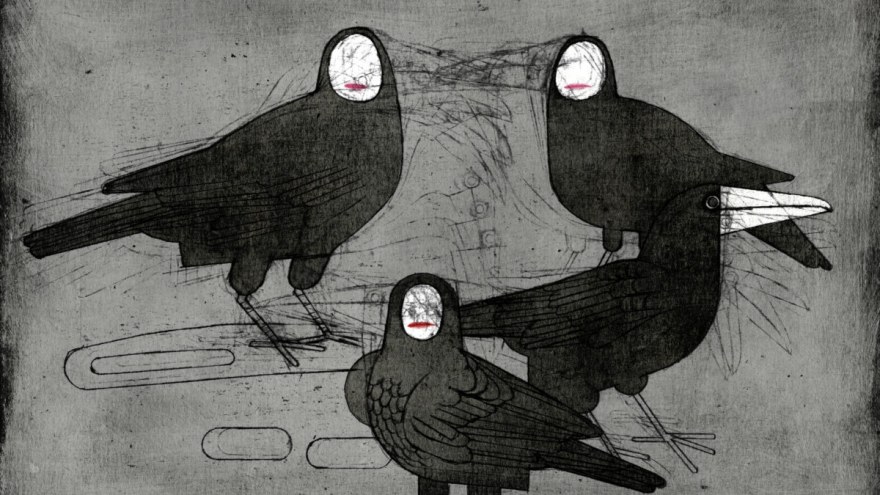Night cap with Kaputt
Interview with Volker Schlecht, codirector and animator of Kaputt
How did you learn about Hoheneck?
This is for Max Mönch and Alexander Lahl, the scriptwriters – I’ve learned about it only when I was involved in the project.
Are the voices we hear the original testimonies or actors? How did you select the testimonies from the whole collected data?
The voices are parts of the original interviews, so they are our testimonies, Gabriele Stoetzer and Birgit Willschuetz.
How did you create the animation?
For the animation, I tried to draw straight ahead in a manner, inspired by William Kentridge. I’m a great admirer of his work for years, but this film was my first experience to animate completely in this way. It’s drawn with pencil on paper, and instead of using one sheet of paper only for one drawn frame of animation, I continued on the same sheet for a complete scene, changing just parts of the drawing step by step. That’s why you can see the traces of the movement in the scenes.
What were you interested in with the bleak side of the testimonies?
From my side just this: After doing one of the interviews and after visiting the remaining prison building, the cells, the bathrooms and all of this, we felt lost and helpless.
Particularly for me it was difficult to imagine, how to deal with this topic without the danger of playing down these experiences of thousands of former prisoners. Bleak, gray, dark is the mood of these stories, gray are the rooms there, the walls, but also the minds, brainwashed by stupid everyday routine and labor under pressure.
Kaputt deals with forced prison labour, which reveals the issue of commercial products traceability, what do you think of “cellmade“ label supporters?
If I understand it right, “cellmade“ is a label to support goods, produced in prisons, to help prisoners to reintegrate into the society and to do meaningful work during their time in detention, right? But this is more or less the opposite of the situation in our film, as you surely know. Personally I think, voluntary labour of prisoners is a good thing, if you can make sure, that there is no exploitation of the prisoners. And with this kind of label you are also informed of what you buy as a consumer – the other big difference to the story of our film. I understand the question and where it comes from, but we should make clear, that there are very less – almost no – things in common between forced labor in prisons as integrated part of a “planned economy“ in a system of political repression on the one hand and a voluntarily organized production with prisoners in a democratic “constitutional state”. May be this view could be naive as well and is, of course, depending on the situation, but in general I’m convinced that we speak about completely different things here.
What were the films that have inspired you the most this past year?
Of course there were too many, it’s always difficult. Just as examples – short films: Ten Meter Tower (Hopptornet) by Axel Danielson & Maximilien Van Aertryck. The Diver (El Buzo) by Esteban Arrangoiz. The Empty by Dahee Jeong. An Ordinary Blue Monday by Naomi van Niekerk. Features: Toni Erdmann by Maren Ade. Nocturnal Animals by Tom Ford.
If you’ve already been to the Clermont-Ferrand, could you share with us an anecdote or story from the festival. If not, what are your expectations for this edition?
Unfortunately I’ve never been there, but hopefully Max and Alexander will do it this year!
Are other releases scheduled ?
After Clermont-Ferrand Kaputt will be screened for instance at the 10th Cairo Forum for Animation Films, as part of the 10th MoMA New York Doc Fortnight, at the 36th Anima Brussels Animation Films Festival and any other festivals.
Kaputt is being shown in Lab Competition L2.








